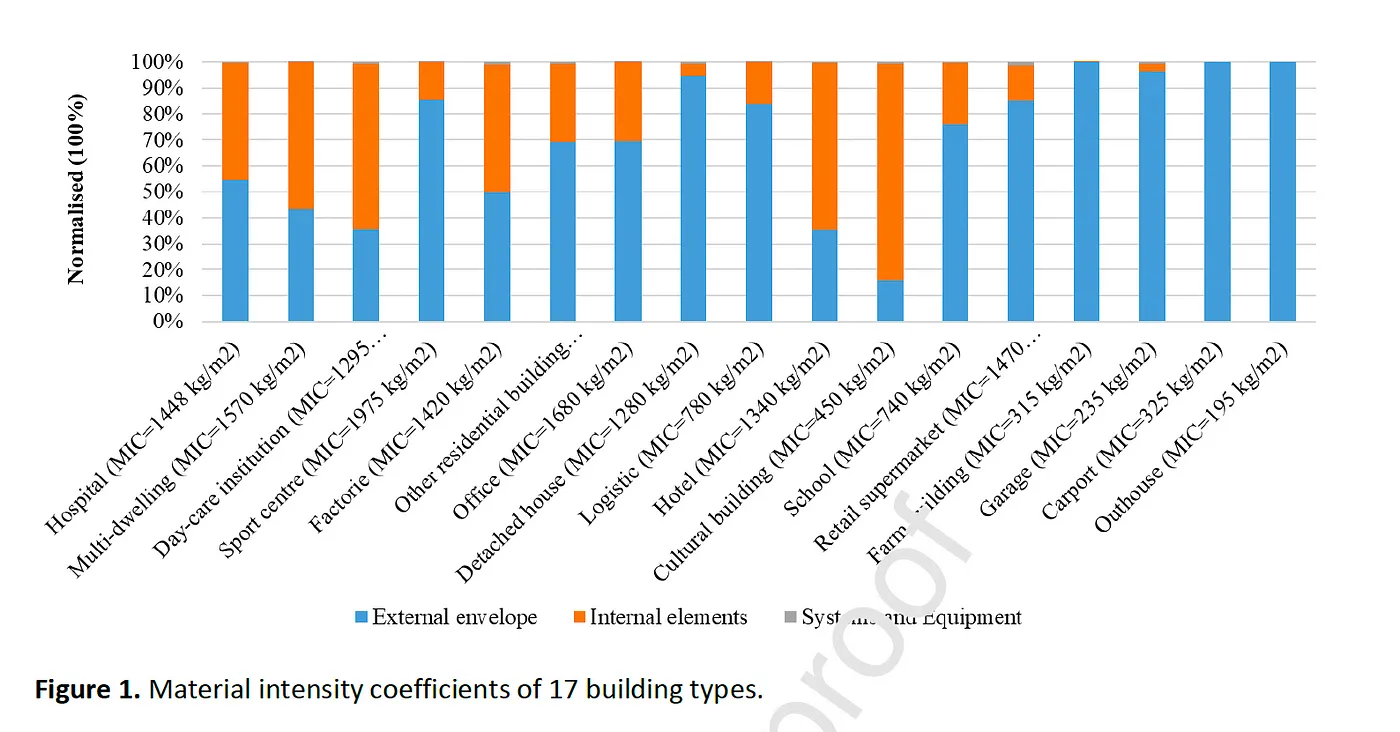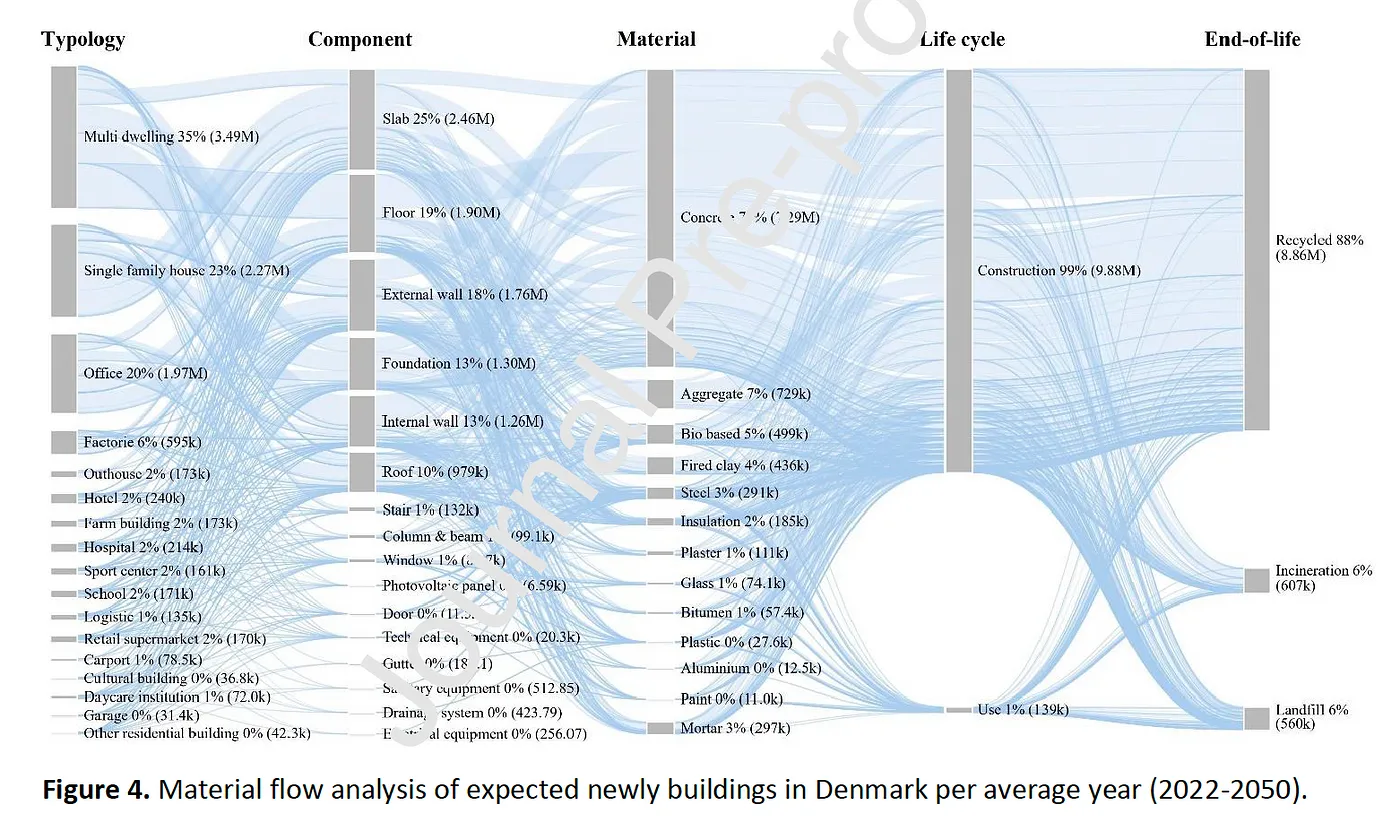Research Summary: Building a Sustainable Future: Denmark’s Environmental Blueprint for 2050
This article is based on the research paper titled “Spatiotemporal tracking of building materials and their related environmental impacts” published in November 2023. The article presents a comprehensive study of the expected environmental impacts of building materials in the context of Denmark up to the year 2050.
Introduction
Urban development is on the rise, and with it comes the need for new buildings. However, this growth isn’t without its challenges. The construction sector, a major consumer of non-renewable resources, contributes significantly to global greenhouse gas emissions. Understanding the environmental impact of new buildings is crucial for sustainable development. This blog post delves into a recent study focusing on Denmark, a country at the forefront of addressing these challenges.
The Study’s Findings:

- Denmark’s construction trends from the past thirty years were analyzed, revealing a steady increase in building types like multi-dwellings, single-family houses, offices, and hospitals. The study forecasts that by 2050, Denmark will see an average annual construction of about 8.2 million square meters, primarily in multi-dwellings and single-family houses.
- The Central Denmark Region is expected to witness the most significant building activity, followed by the Capital Region and Southern Denmark. Remarkably, Copenhagen is poised to account for 8% of the total new building area.
- The material requirement for these constructions is substantial. About 9.9 million tons of materials per year will be needed, predominantly concrete (73%), aggregates (7%), and biobased materials (5%). The slab component in single-family houses will require a significant portion of these materials.
- The environmental impact of these new constructions is a critical concern. The study estimates an average of 4 million tons of CO2 equivalent per year in greenhouse gas emissions from new buildings, with a major part (77%) coming from material production and construction activities.
Implications and Actions:
- The study highlights the urgent need for sustainable practices in the building sector. With multi-dwellings responsible for a significant portion of the environmental impact, efforts to reduce emissions should focus on these types of buildings.
- The materials used in construction play a crucial role in environmental impacts. For instance, concrete and steel are major contributors to the greenhouse gas emissions from building components. Adopting materials with lower environmental footprints is vital.
- Interestingly, the study finds that 99% of the materials used will be for new construction, with only 1% for maintenance. Most of the used materials are expected to be recycled, aligning with Denmark’s waste management strategies.

Conclusion
Denmark’s proactive approach to mapping and mitigating the environmental impacts of its building sector sets an example for other countries. This study not only provides a forecast but also underscores the importance of sustainable materials and construction practices in the face of urban expansion. It’s a call to action for countries, industries, and individuals to prioritize sustainability in our built environment.
This post aims to shed light on the challenges and opportunities in sustainable urban development, with Denmark’s initiative offering valuable insights for a greener, more sustainable future.
Related articles

Climate-Resilient Materials for the Built Environment: A Data-Centred Prime
As climate volatility intensifies, resilience metrics are fast becoming as critical as carbon data in material selection. This article outlines why adaptation is now a design imperative, how materials can be evaluated through a systems lens, and what KPIs project teams should demand. From self-healing concrete to fire-rated façades, we present a structured taxonomy of resilient materials, explain how to embed this intelligence into digital design workflows, and propose next steps for specification, benchmarking, and procurement.
Read more
The Most Interesting Low Carbon Products in Office Design
In this article and collection, we highlight 11 outstanding products that contribute to a lower carbon footprint in office design.
Read more
Top Low Carbon Building Boards: Performance, Benefits, and Use Cases
The building boards highlighted in this article and collection showcase low-carbon innovation in modern construction.
Read more